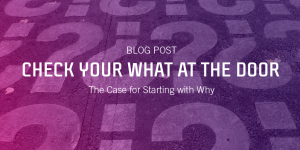When it comes to designing and developing your print campaigns, do you take the gender of the recipient into account? If not, you should. Research shows that the brains of men and women are organized differently, and those differences affect the way we think and respond to marketing messages.
Let’s look at some of the differences that you might want to keep in mind when developing your next project – whether it be print, email, or web-based.
Prefrontal cortex — larger in women. The prefrontal cortex is the portion of the brain that regulates emotions. According to Dr. A.K. Pradeep, CEO of Nielsen NeuroFocus, the parts of the brain that handle intuitive reasoning and regulate worry are also larger. As a result, women tend to respond more to messages that are more social, empathetic, and verbal.
What might this look like on a page? A woman might respond marginally to a postcard showing a new style of athletic shoe. But show her an image of another woman wearing the shoe to take a morning run with her husband or a friend, and her brain is more likely to engage.
Corpus callosum —larger in women. The corpus callosum has been described as being like an “eight-lane superhighway” connecting the right and left parts of the brain. Because women generally have a larger corpus callosum, they tend to be multi-taskers. Combine this with the focus on social interaction and you can see why, in a study titled, “Men Buy, Women Shop,” researchers at Wharton’s Jay H. Baker Retailing Initiative and the Verde Group found that women tend to focus less on specific products and more on the shopping experience itself. They also found them more likely to be influenced by sales associates. This means your marketing goals may be achieved simply by getting your female audience into the store.
Men, on the other hand, are more product- and mission-focused. They also tend to respond very strongly to utilitarian aspects of shopping, such as product stocking and the ease of parking. This means you might want to give men enough information to make a purchase decision before going to the store so they can get in and get out. If they can find the product and check out in less than five minutes, that might be a key selling point!
Hippocampus — larger in women. The hippocampus is the part of the brain that consolidates information from short-term to long-term memory. This part of the brain is larger in women. As a result, women retain a higher level of nuance in emotional detail. Men, on the other hand, have a larger parietal lobe, which means they tend to be better at spatial perception. That translates to better results with more images and less text. Men also have larger amygdala (more aggression), which means appealing to their natural competitive instinct will get more results.
Make sure that your communications speak to your audience in the way they want to be spoken to. Print can be very beneficial in this regard as it has the unique opportunity to tie in the tangible, emotional, and functional appeal of the message with the stock and processes used in production. Print can also be used to create versioned and variable information (including images) to allow the right message to get to the right audience. So use those benefits, along with knowledge of some of the key gender differences, to make your results soar!
More Insights to Enjoy:
+ QR Code Use Trending Toward Women
+ Psychographics Can Help Your Marketing Communications
+ A/B Testing Through Dividing and Analyzing
Sign up today to receive future issues of our award-winning newsletters to ensure you receive all of Action’s Insights.
© Action Graphics, 2013.




